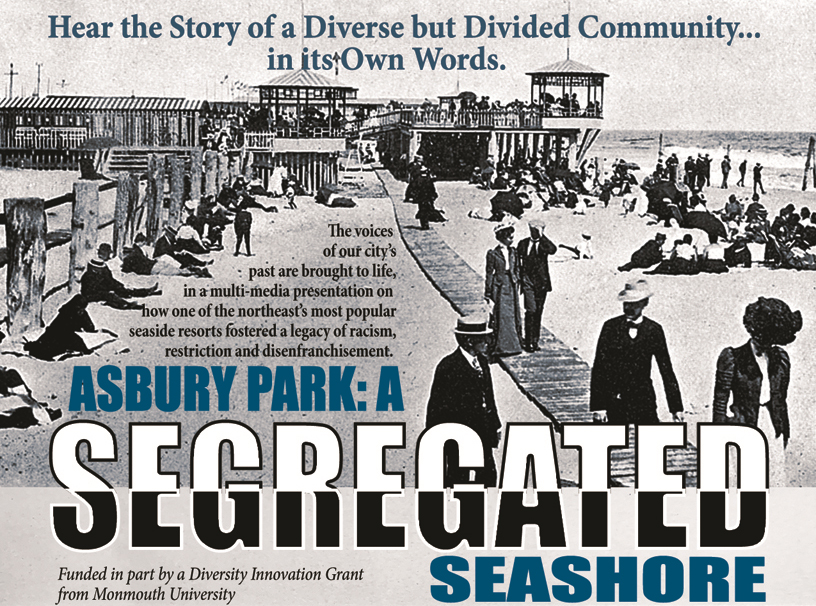A Multi-Media Presentation by the Asbury Park Museum

For the well-to-do vacationers from the cities of Gilded Age America, and the middle-class day-trippers of the early Twentieth Century, Asbury Park had it all: celebrated beaches, spectacular pavilions, grand hotels, top-shelf entertainment, shopping, and dining experiences for every taste; all illuminated by colorful amusements that would create lasting memories for visitors of all ages.
However, for generations of other Americans, including the many Black residents who helped build the boardwalk landmarks, staff the restaurants, and serve the out-of-town guests, the seaside resort’s pleasures remained largely out of reach, due to restrictive Jim Crow policies. These policies endured from the days of Founder James Bradley, until well into the post-WWII era.
With the spotlight once again shining on Asbury Park as it marked the 150th anniversary, the Asbury Park Museum unveiled a popup exhibit [From July 8 to December 16, 2021] at the Berkeley Oceanfront Hotel, located at 1401 Ocean Ave. On November 14, the exhibit came to life by way of a multi-media presentation, held from 2 to 4 pm in the hotel’s Johnny & June Room.
“Most residents over the age of 40 are aware of the waterfront restrictions that were placed on our African American community during the early to mid 1900’s,” said Kay Harris, the museum’s founder and board president. “Our ‘Segregated Seashore presentation gave our audience the opportunity to relive those days by hearing the many voices of those who fought against these restrictions, as well as the voices of the visiting hotel guests, newspaper editorials and that of founder James Bradley. We were excited to be able to provide this opportunity for community-wide engagement as the program doves into the social consciousness of the 1880’s, and the decades to follow.”
Funded in part by a Diversity Innovation grant from Monmouth University, and hosted by the historic Berkeley Oceanfront Hotel, “Asbury Park: 150 Years of Change and Transformation – A Segregated Seashore” was a multi-media display that explored the dizzying highs and the devastating lows of this uniquely American city by the sea. The pop-up exhibit and presentation was a snapshot of the iconic buildings, memorable cast of characters, signature soundtracks, epic tragedies, natural disasters, and societal sea-changes that threatened its sandcastle dreams; all presented through the prism of a diverse but divided community.
“This was a journey through time, an expression of love for this city of summers where so many of us made a year-round home…even if our city didn’t always show us love in return,” Harris said. “It’s a story told through words, images, and artifacts; one that spans the pious paradise of Bradley’s vision, the challenges of the Depression and the wartime home front, the emergence of the ‘music city,’ and the remarkable rebirth of a place that seemed all but lost at the end of the last century.
The exhibit has now moved to Guggenheim Memorial Library at Monmouth University in West Long Branch, New Jersey.